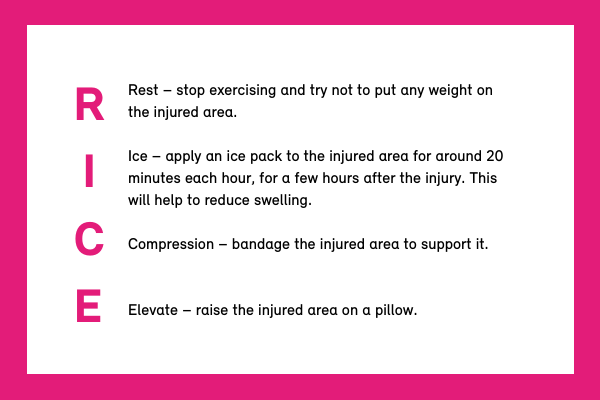As we enter the final countdown to this year’s London Marathon, thousands of runners are training hard and making their last minute preparations to compete in the world’s largest single annual fundraising event.
But alongside the success stories and fundraising celebrations, there will be runners who injure themselves both before and during the event, leading to pain and disappointment.
Both novice and experienced runners are susceptible, the former because their muscles aren’t accustomed to working in this way and the latter because there is a temptation to push themselves to hard.
To avoid getting injured, it’s good to know the common running injuries to look out for and some of the best ways to prevent them.
Common running injuries
Research into running-related musculoskeletal injuries found 28 common injuries among runners. Top of the list are:
- Patellofemoral pain syndrome (runners knee) – This is the most common overuse injury in runners. It is characterised by pain at the front of the knee, behind the kneecap or around the knee, which may be a sharp, severe or dull pain. It can have a number of different causes, including swelling under the kneecap. If the pain is severe or the knee is swollen you should see a doctor straight away. Otherwise, rest the knee and use ice to bring down swelling. Try gentle stretching exercises and don’t run again until the pain has gone. You should see a doctor if you still have pain after a week’s rest.
- Medial tibial stress syndrome – Sometimes referred to as shin splints, this is a common and debilitating injury in runners, linked to overuse. It causes pain along the bottom two thirds of the shin and if left untreated it can cause stress fractures. There are believed to be a number of causes including stress, weakness and inflammation of the tendon.
- Achilles tendinopathy – the Achilles tendon is the strongest in the body. It attaches the calf muscle to the heel bone. It can tolerate very high loads however small damage can occur during use and if the tendon is not given adequate time to repair itself then damage can accumulate leading to Achilles tendinopathy. The symptoms are pain, weakness, stiffness and swelling. Treatment involves exercises to stretch and strengthen muscles, shockwave therapy and autologous blood injections. Orthotics may provide pain relief during rehabilitation.
- Plantar fascilitis – The plantar fascia supports the arch of the foot and provides dynamic shock absorption during walking and running. Overuse and poor biomechanics can cause it to become inflamed and develop micro-tears, a condition called plantar fascilitis. This causes pain under the heel which is normally worse near the inside corner and is most severe in the morning. Stretching and strengthening exercises and using orthotics can help.
Preventing injury
For all types of running injury, there are some simple common sense measures you can take to reduce your risk of getting hurt:
- Listen to your body – Pain, aching and soreness is a signal from your body that you might be doing too much or not using your body in the right way. Pay attention to these signals, stop running and rest for a few days until the pain is gone.
- Build up gradually – as tempting as it can be, don’t try to do too much too soon. Your body needs time to adapt and build strength. Strengthening your core and hip muscles will support your legs all the way down, helping to prevent knee, hip and ankle injuries.
- Stretch and warm up – stretching is an important part of your warm up routine. If you have done a long run (15 miles or more) do not stretch immediately, however, as your muscles will be full of micro-tears which can be exacerbated by immediate stretching.
- RICE – if you experience joint pain or muscle aches yourself remember: Rest, Ice, Compression, Elevation to relieve pain, reduce swelling and protect damaged tissues.

If you suspect you may have injured yourself during training it is important not to ignore it and press on as you could risk a far more serious and long-term injury. Talk to us about getting an accurate diagnosis so you can treat the condition appropriately.









